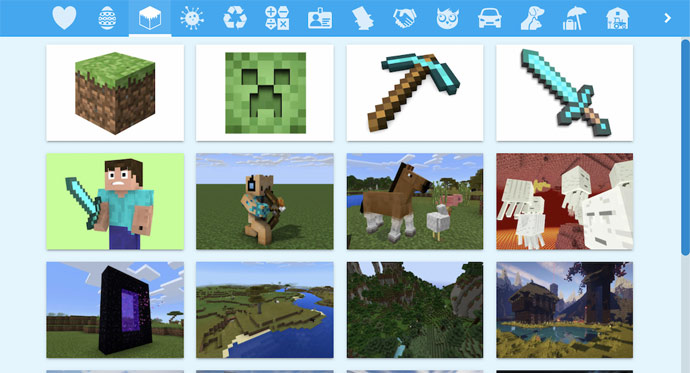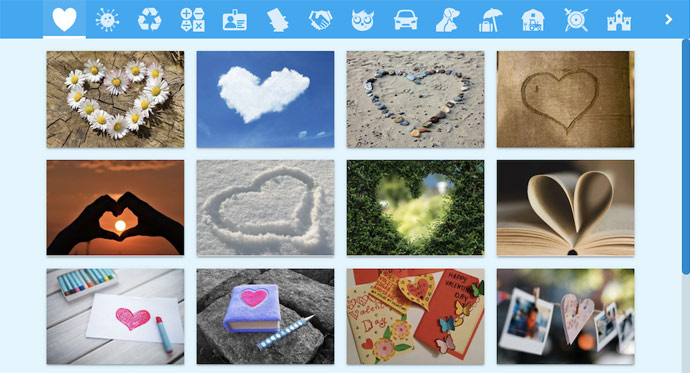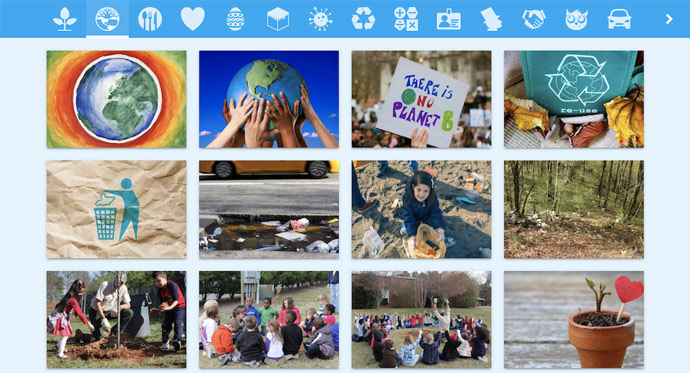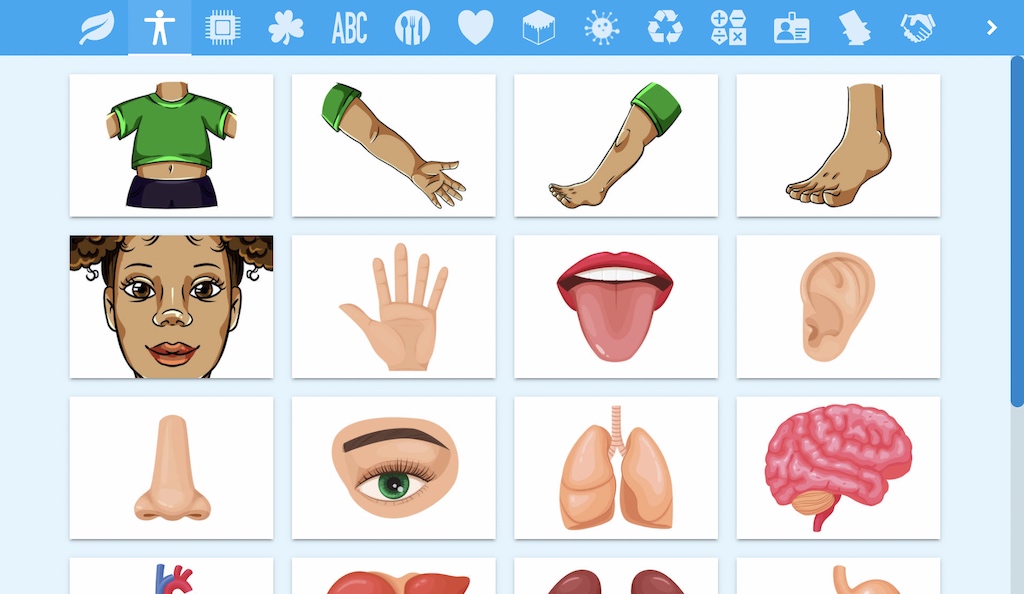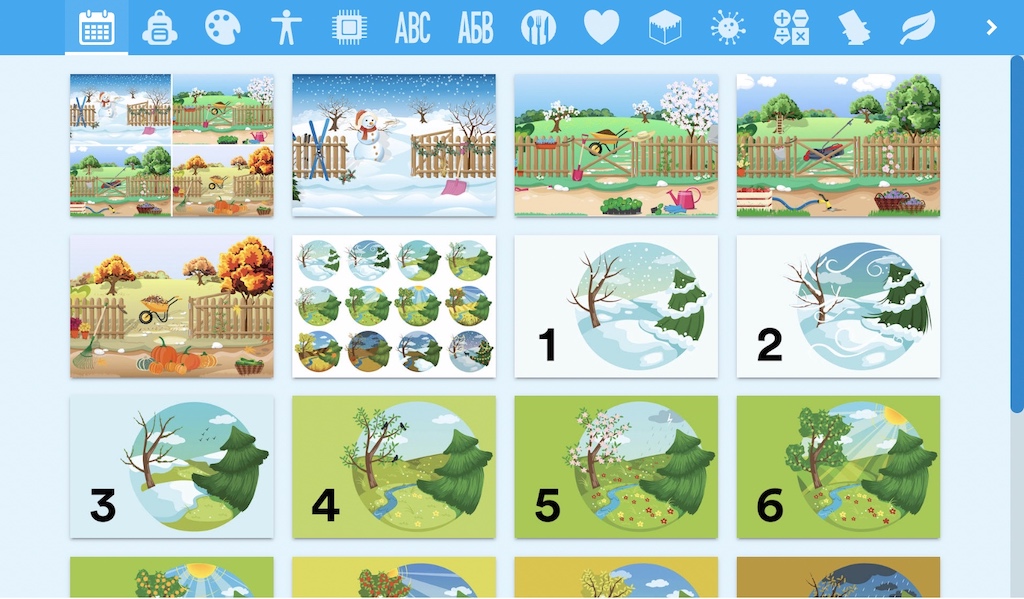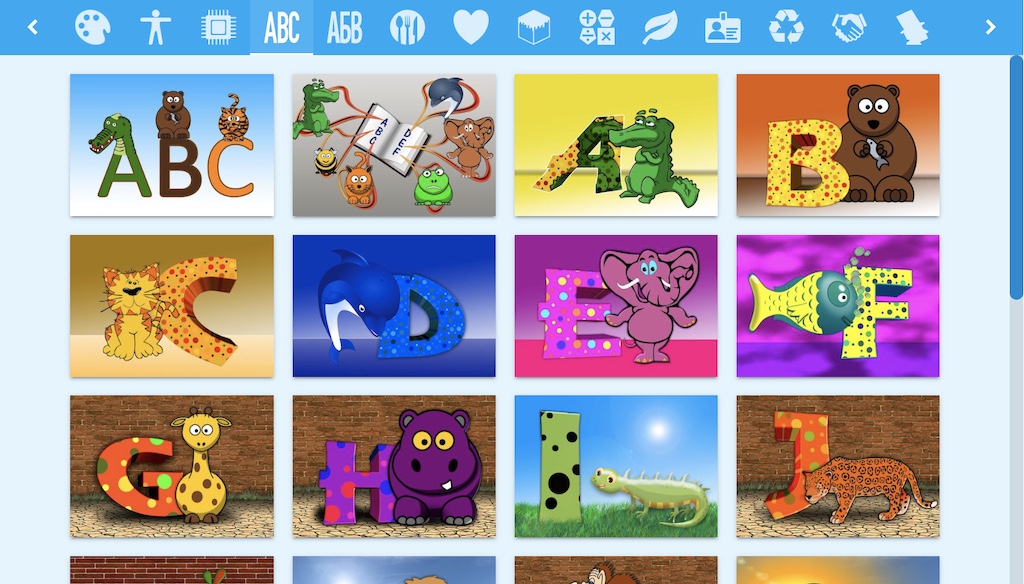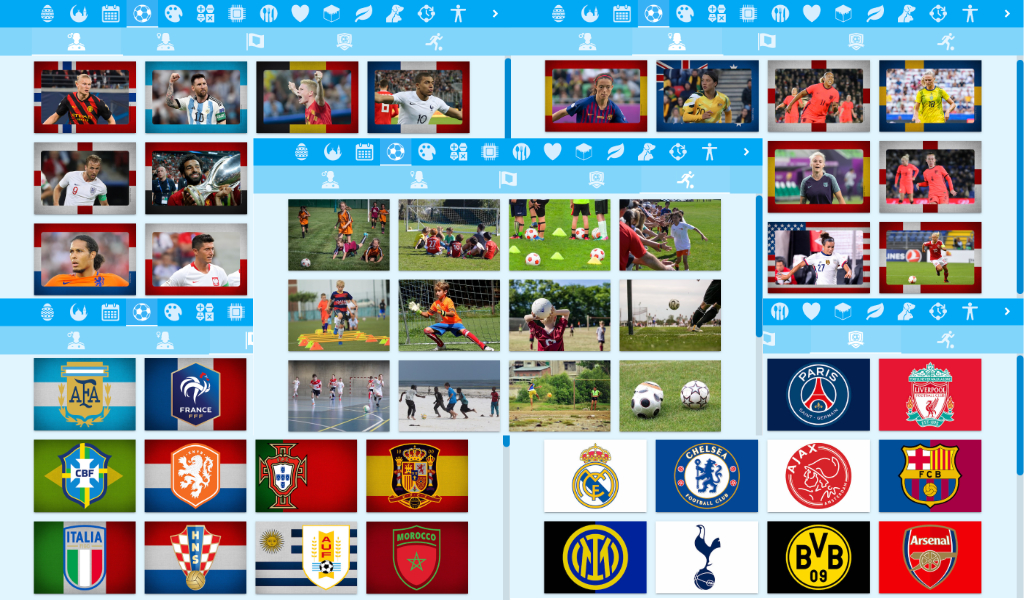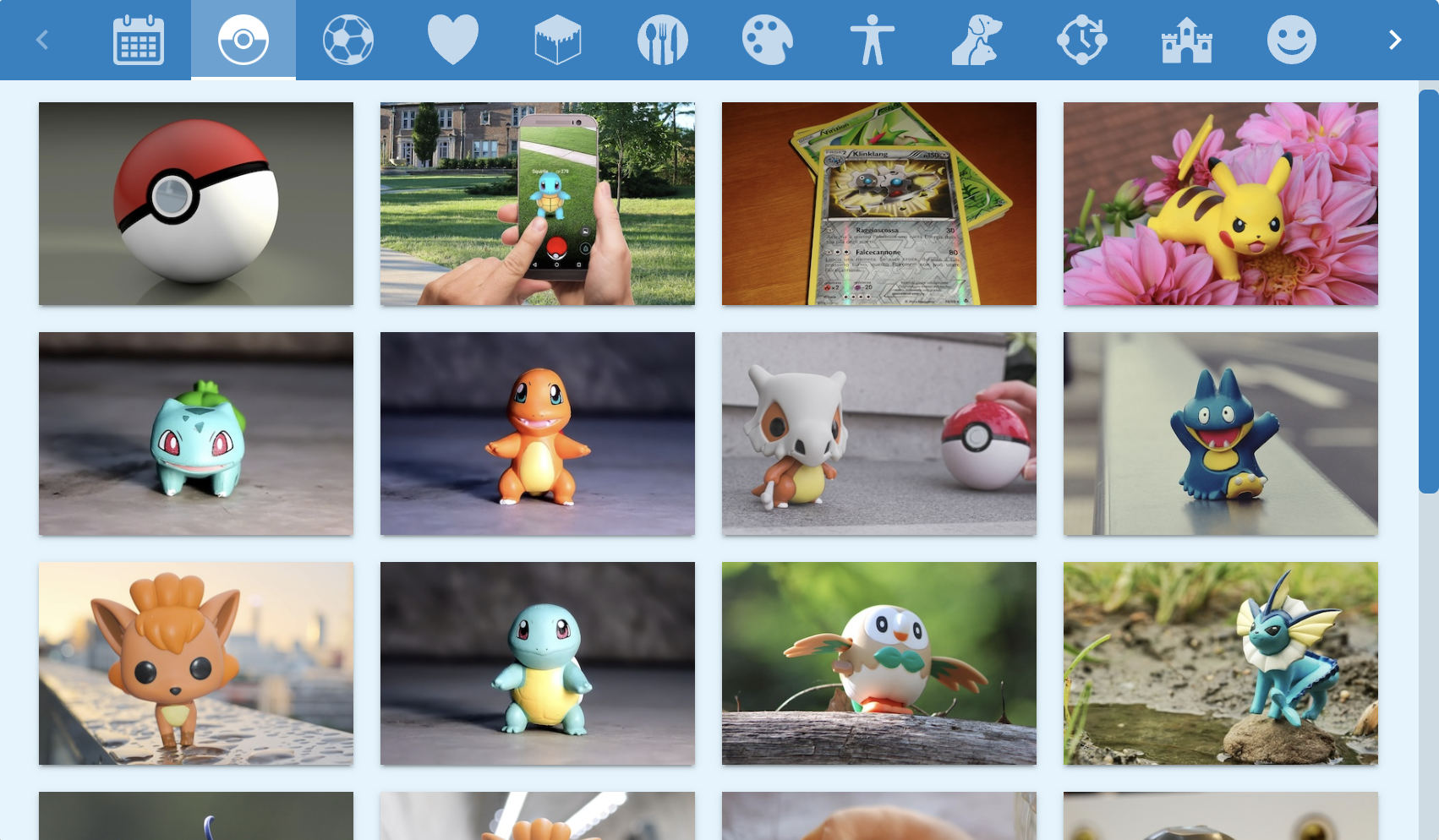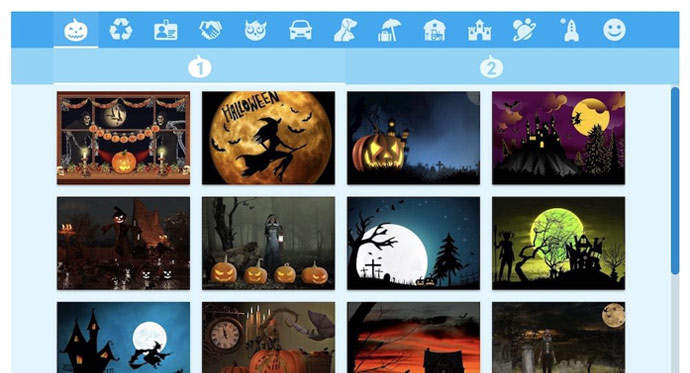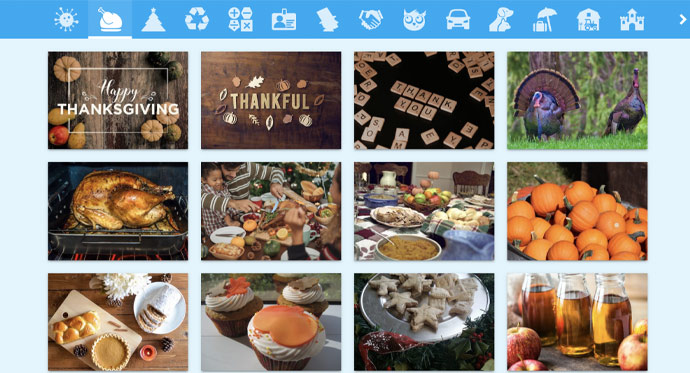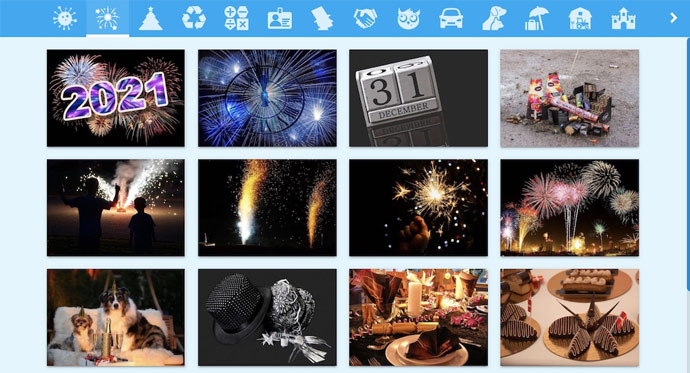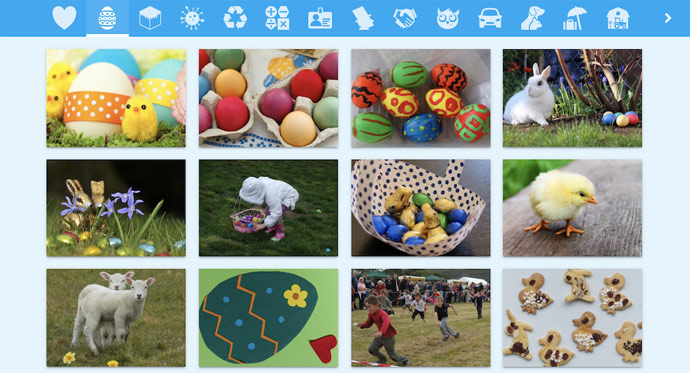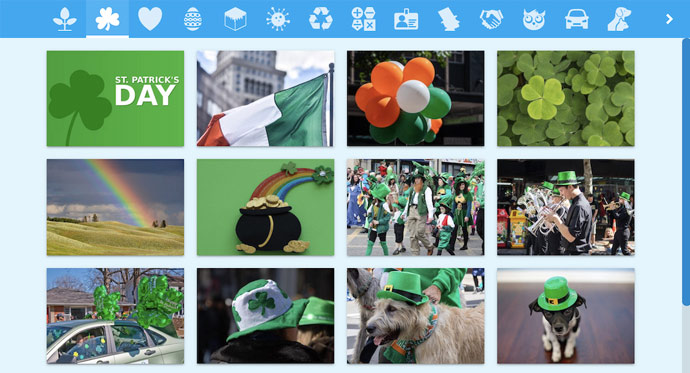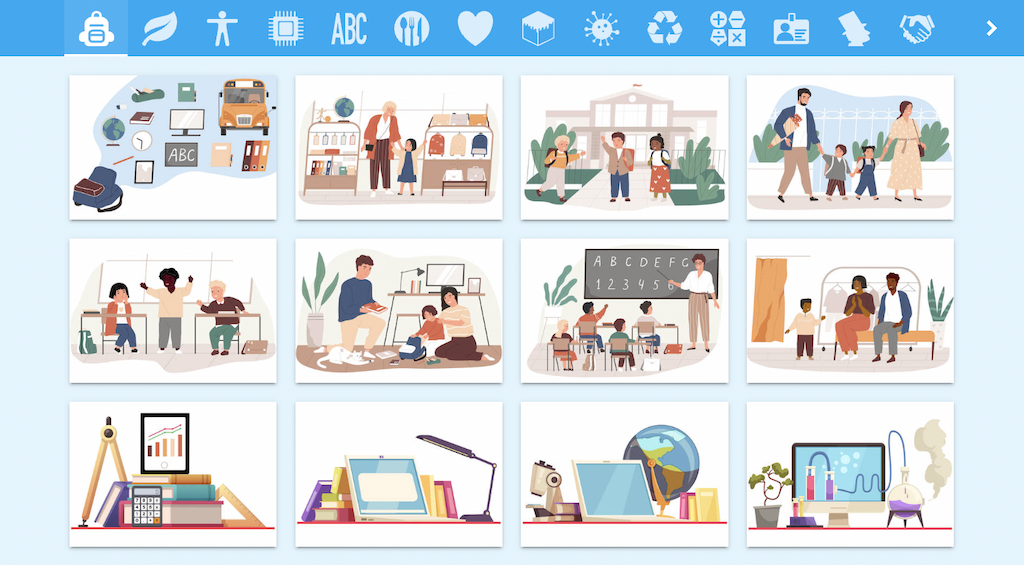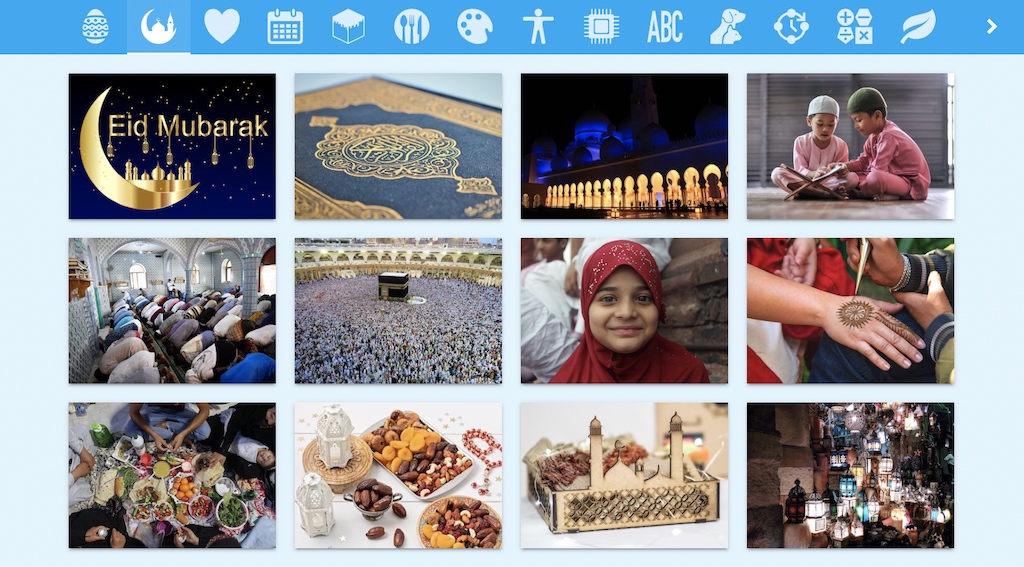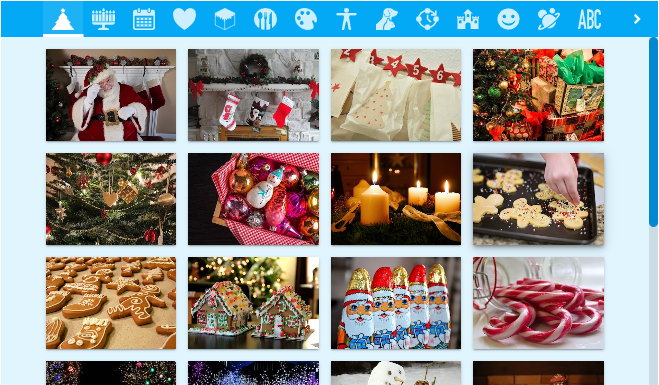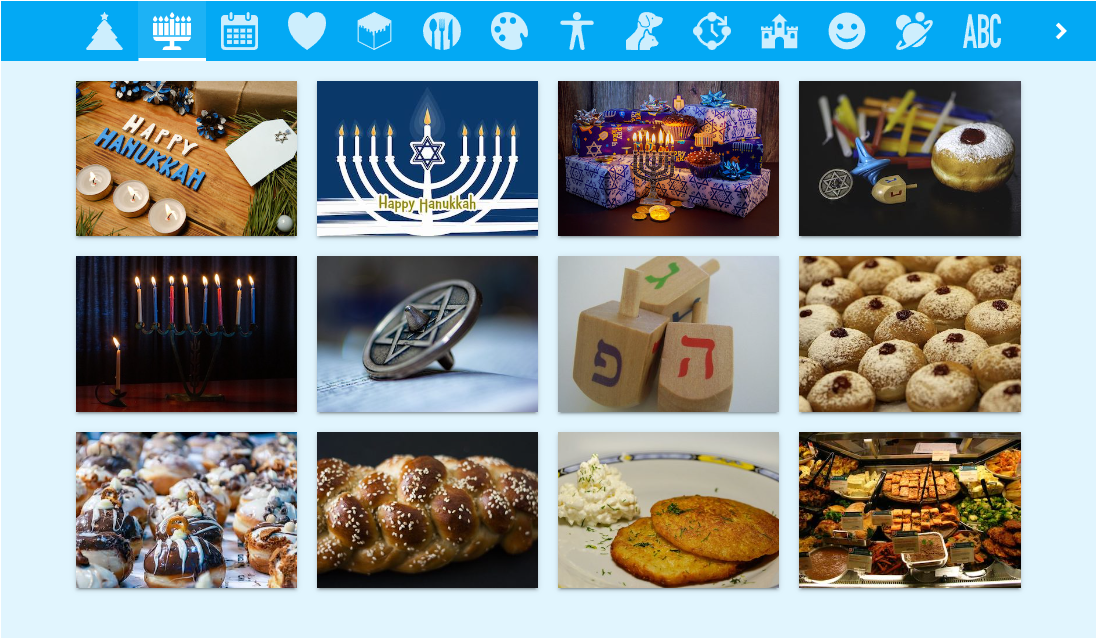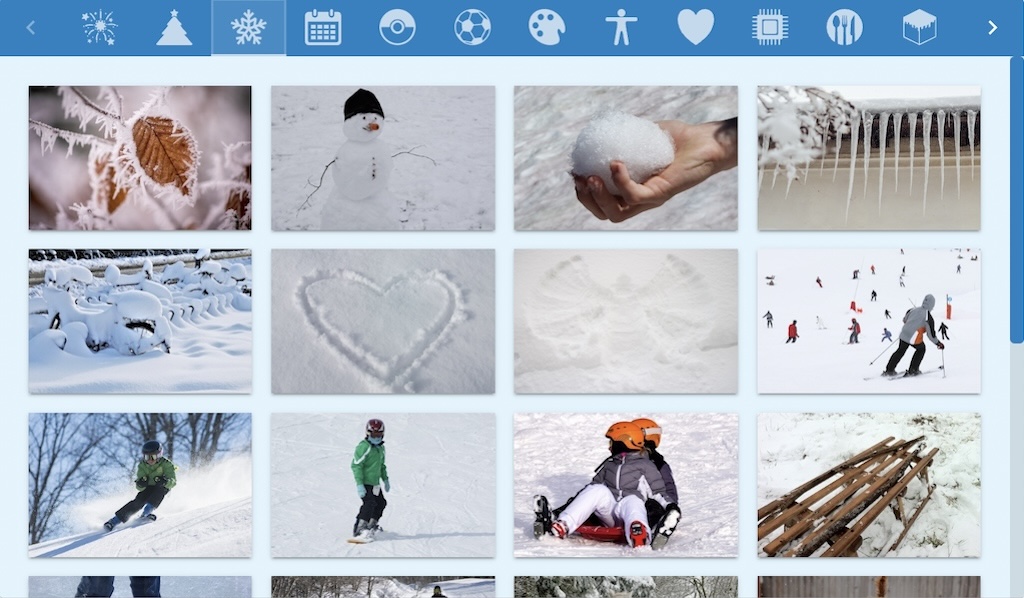Writing Prompts
Winter is Cold - Writing is Cool
Winter is a time for snowflakes, hot chocolate, skiing, and many other things! With that in mind, we’ve picked 24 images and put together 8 prompts to help you imagine, create, and write about everything the season offers. Whether you dream of snowy fiction adventures, your winter favorites, experiences, or feelings, there’s so much to inspire your stories!
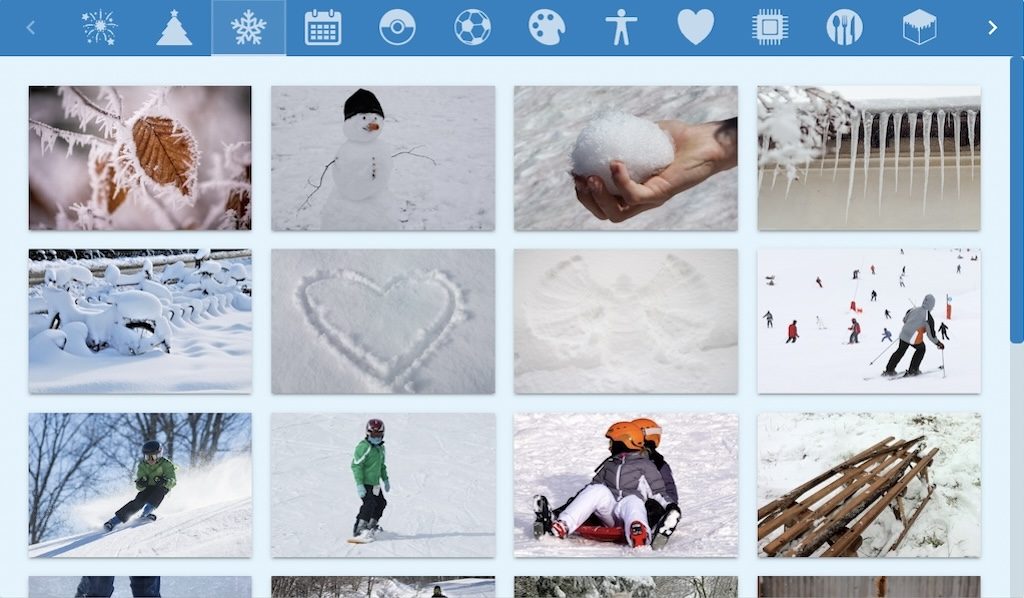
- List four words that best describe winter for you. Create a page for each word and explain why you associate these words with winter.
- Write a persuasive text highlighting the good or bad things about winter and argue that it is the best/worst of all seasons. Describe some of your best/worst winter experiences.
- Write a story about the journey of a single snowflake, from forming in a cloud to landing on the ground to becoming a snowball that is thrown.
- Choose an animal that doesn’t hibernate or migrates during the winter. Write a story about how it survives the cold months and its challenges.
- Create an acrostic poem using the letters in W I N T E R or S N O W F L A K E. Try to include words and ideas that describe how winter looks, sounds, feels, and smells.
- Create a cookbook with recipes for warm and comforting dishes that are perfect for winter, featuring seasonal ingredients or winter holiday treats.
- Make a list of signs that winter has arrived. Focus on your senses and describe how winter looks, sounds, feels, and smells.
- A child builds a snowman that comes to life. Write the story about how they go on a quest to bring winter magic back to a world where it’s slowly disappearing.
Catch 'em All with Your Writing!
Grab your Pokéball—it’s time to summon your imagination! From creating your own Pokémon to comparing the strengths and weaknesses of your favorites, these 8 writing prompts and the accompanying image bank will challenge learners’ creativity and deepen their connection with the Pokémon universe.
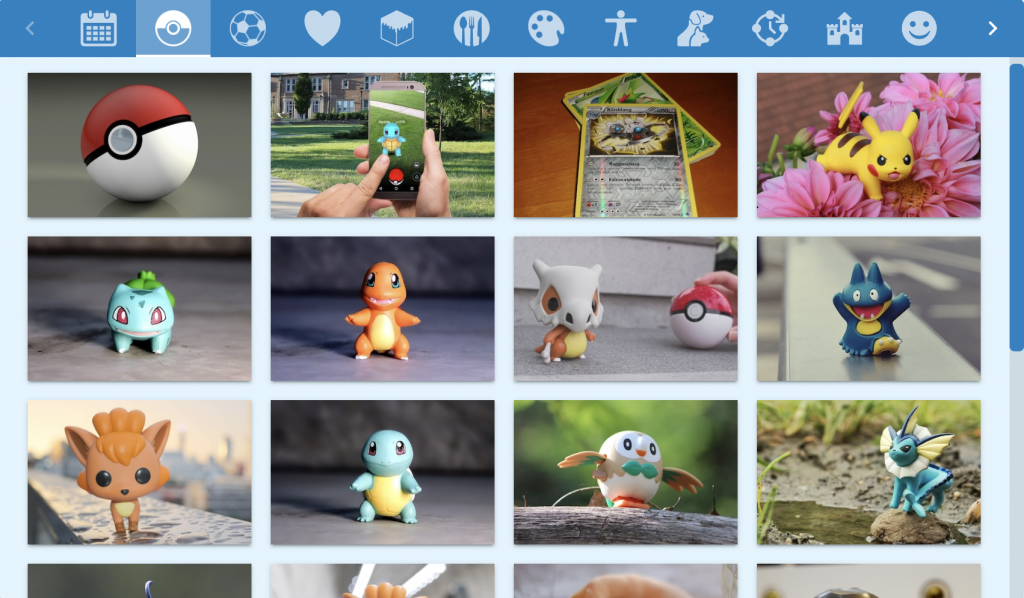
- Imagine you are a Pokémon creator. Design your own Pokémon, find a name, and describe its appearance, abilities, and characteristics.
- Write a diary entry for a day in the life of a Pokémon trainer. What Pokémon did you encounter, and what challenges did you face?
- Write an acrostic poem starting with the letters P O K E M O N.
- Choose a Pokémon and persuade your readers why it is the best. Use descriptive language and strong arguments.
- Pick two Pokémon and write a book comparing and contrasting them. Consider their types, abilities, strengths, and weaknesses.
- Choose a Pokémon and describe it in detail. What does it look like, what are its abilities, and how does it behave?
- Why do you think Pikachu is the most recognized Pokémon, and argue why it is reasonable or not?
- Describe your best personal experience with Pokémon figures, cards, GO, games, etc., and explain why it was so good.
Encourage your students to log in at app.writereader.com and start their Pokémon writing journey. Happy writing, trainers!
Write, Shoot, Score!
Soccer fascinates billions of people worldwide and can undoubtedly motivate many students to write their own books. With as many as 5 image bank categories and over 100 images of world-famous male and female players, federation and club logos, images of children playing football, and the below prompts, the scene is set for a great match of writing.
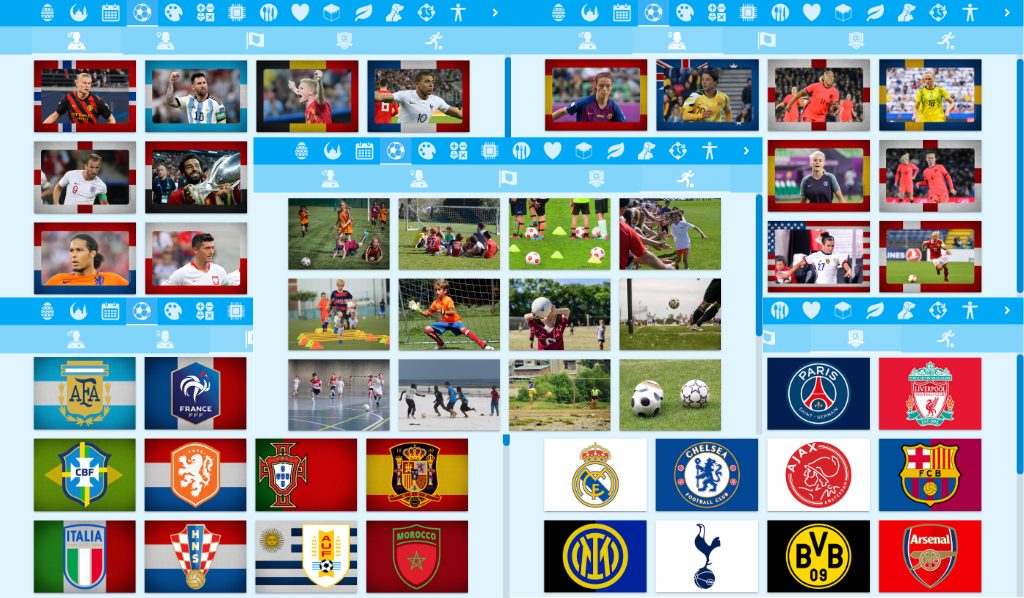
- Who is your favorite soccer personality, and why? Tell about their history and achievements.
- Which club or national team is your favorite? Describe why and some of the players you are a fan of.
- If you could interview your favorite soccer personality, what would be your top 5 questions?
- Set your favorite team/your chosen 11 and justify why you have chosen that particular goalkeeper and those defenders, midfielders, and attackers.
- Describe your best soccer experiences as a player or a fan in a stadium or in front of the television.
- Describe the rules of soccer and your fascination with the sport. Imagine describing it to someone who has never heard of soccer before.
- Write a fictional story about soccer and dreams. Choose a main character (can be yourself) and write about experiences, successes, and disappointments as a player, fan, or staff.
- Make an acrostic poem starting the sentences with the letters from the letters S O C C E R or other related words (e.g., M E S S I or M A N C I T Y). Try to include words related to soccer and players.
A Festival of Lights and Writing
Whether you’re a seasoned writer or just starting, these 8 Hanukkah writing prompts and images are sure to inspire your creativity and help you explore this special holiday. So light the candles on your menorah, and let’s get writing!
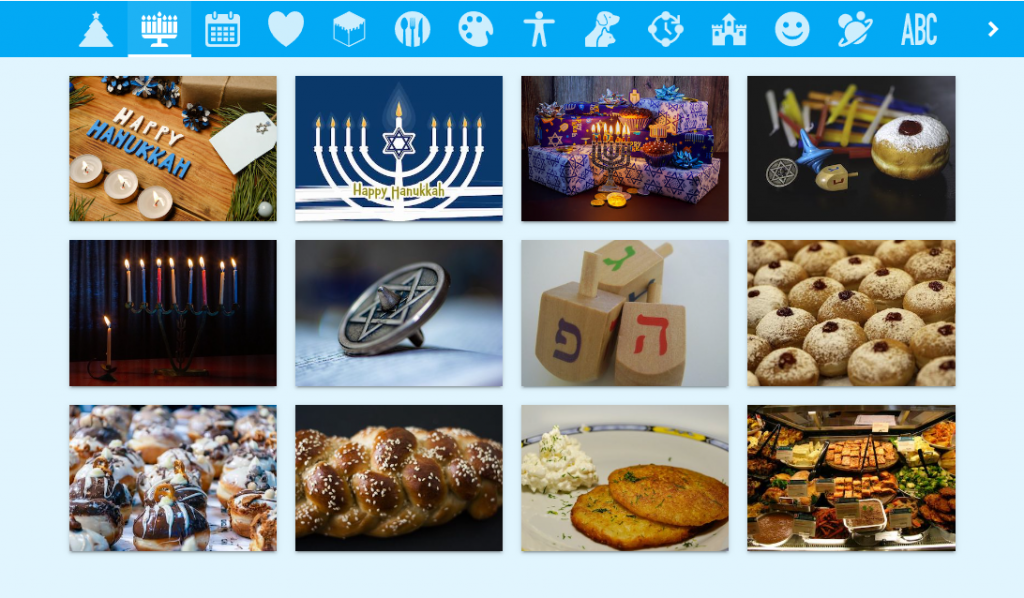
- Create a Hanukkah wish list. What are your top three holiday wishes and why?
- Tell the story of a Hanukkah candle and its perspective on bringing light to the celebration.
- Write about the Hanukkah traditions to someone who has never heard of them or participated in the celebration.
- Start a story with or use some of the following lines: “As I lit the first candle on the menorah, I couldn’t help but feel…”Every Hanukkah, my family and I always…”, “On the eve of Chanukah, there was…”
- Write a descriptive paragraph about your favorite Hanukkah memory. Use sensory language to help your readers feel like they’re experiencing it with you.
- Hanukkah is a time for giving and receiving. Write a letter to someone you love, telling them what they mean to you and how they’ve made your life brighter.
- Write about a couple of the best family Hanukkah traditions you have experienced and look forward to.
- What are some of your favorite foods to eat during the eight days of Hanukkah – and why?
Inform your students and their parents that they can log in to app.writereader.com during their holiday to keep their writing current.
It is the Season to Write!
Get inspired this holiday season with these Christmas writing prompts! From letters to Santa to acrostic poems, these 8 writing prompts and accompanying image bank will help learners capture the magic of the holiday season.
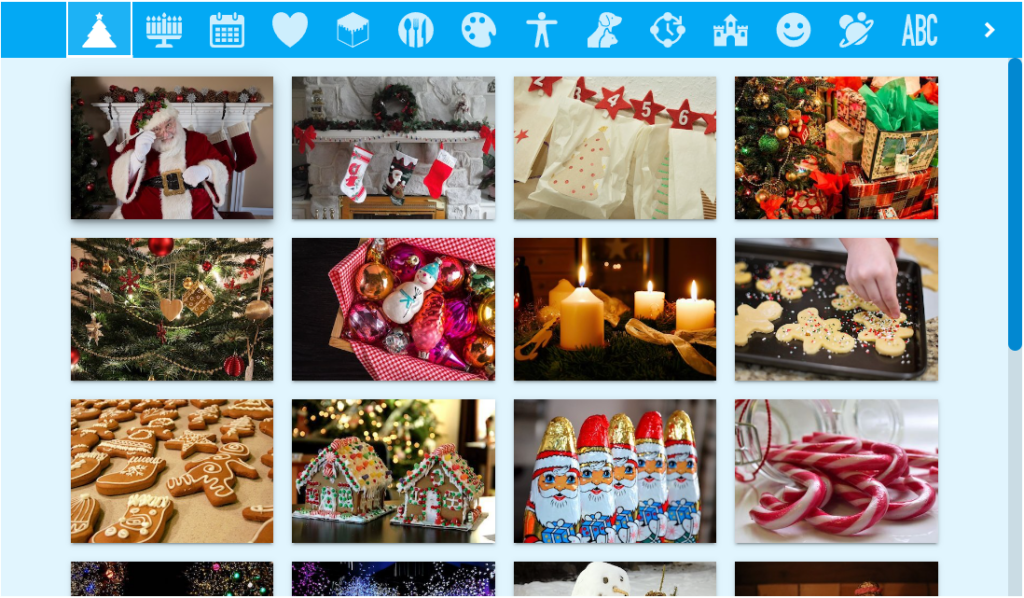
- Write a letter to Santa Claus. What are your top three holiday wishes? Explain why.
- Imagine a day in the life of a snowman during the holiday season. What adventures and challenges does it experience?
- Start a story with or use some of the following lines: “It was the night before Christmas, and snow was falling …”, “I looked out my window and saw Santa …” or “When I woke up, an elf was …”
- Write an acrostic poem with the letters of C H R I S T M A S , using each letter to start a new line and write a word or phrase that comes to mind when you think of Christmas.
- Write a descriptive paragraph about your favorite Christmas memory. Use sensory language to help your readers feel like they’re experiencing it with you.
- Write about your dream holiday feast. What delicious dishes would be on the menu, and who would you invite to share the meal?
- Make a cookbook with your favorite Christmas dishes, a list of ingredients, and a step-by-step guide.
- Write a book about Christmas to someone who has never heard of or celebrated the holiday. Why do we celebrate Christmas, and with whom?
For more inspiration, read this blog post about creating and sharing holiday gift books.
Fall in Love with Writing About Autumn
“Winter is an etching, spring a watercolor, summer an oil painting, and autumn a mosaic of them all.” – Stanley Horowitz
Considering that quote, an image bank category with 16 photos, and the 8 writing prompts below, there are plenty of good reasons to write about the most colorful season and months full of family holidays. We hope these prompts and images will help inspire you and your students!
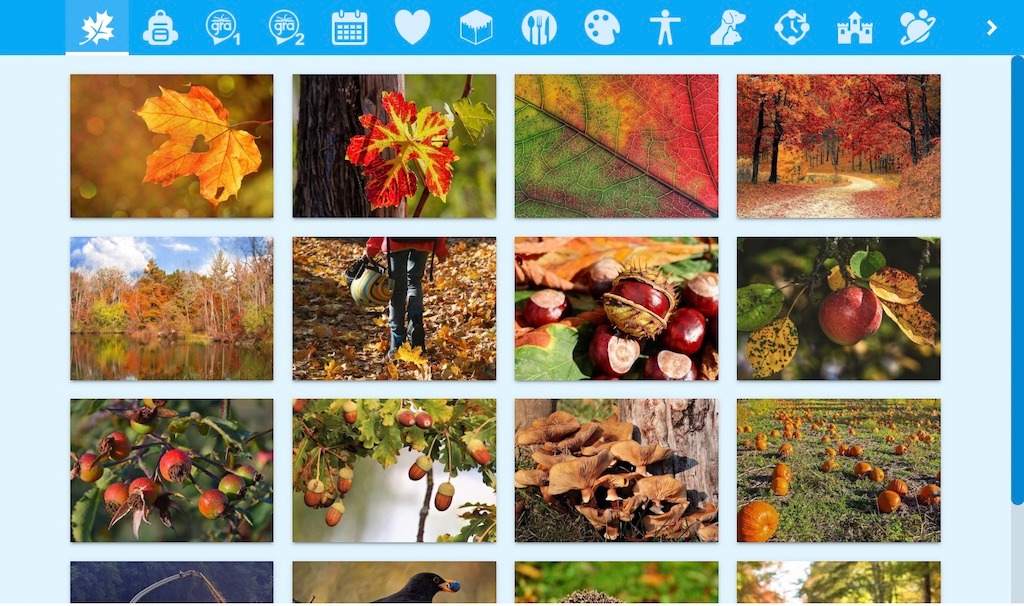
- List four words that best describe autumn for you. Create a page for each word and write about why you associate these words with autumn.
- Write a persuasive text where you highlight the good things about autumn and argue that it is the best of all seasons.
- Write a book about why many trees lose their leaves during autumn.
- Write a book about an animal that hibernates, and explain how it prepares during the fall to survive the winter.
- Make an acrostic poem starting the sentences with the letters A U T U M N. Try to include words about how autumn looks, sounds, feels, and smells.
- Write a book about some of the best autumn experiences you have had – e.g. playing in leaves, picking apples, going on a hayride, favorite holidays …
- Tell a story about how an evergreen and a deciduous tree next to each other in a forest experience autumn.
- Create an autumn cookbook with recipes using seasonal fruits and vegetables as the main ingredients.
Login at app.writereader.com and create a book to see and use the autumn image bank category.
Summertime and the Writin’ is Easy
Summer is often a time for new impressions, experiences, dreams, and joy – and, therefore, a good time for students to write. The students can use their own images and ideas, but can also find inspiration and support from the 8 prompts below and the 20 images in the summer image bank categories.
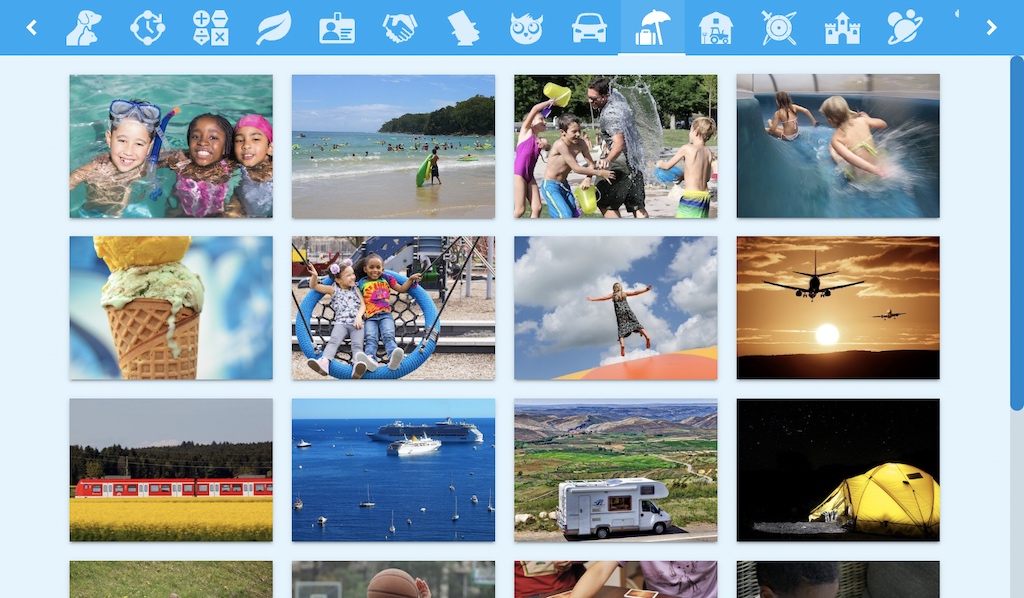
- Create a summer holiday diary with photos and text about your experiences, what you learned, and how you felt.
- Pick an attraction you visited during the summer or a place you have been, create a non-fiction book with your experienced knowledge, and/or search the internet for further information.
- Write about a beach day gone wrong, where everything that could go awry does.
- Imagine you’re on a road trip across the country. Write about the sights, sounds, and feelings you experience along the way.
- Create a story about a family vacation that takes an unexpected turn.
- Write an acrostic poem with letters from a city or country you visited during your holiday – e.g., C A N A D A.
- Create a “What to remember and how to pack” book about a trip or holiday you have been on.
- Write a travel wish list where you tell about the places you would like to visit, and why.
Inform your students and their parents that they can log in to app.writereader.com during their holiday to keep their writing current.
Family, Faith, Fasting, and Writing
Encourage your students to learn about and/or reflect on their experiences during Ramadan. Below are some writing prompts that will help them write about the holy month supported by the 12 illustrations in the Ramadan image bank category.
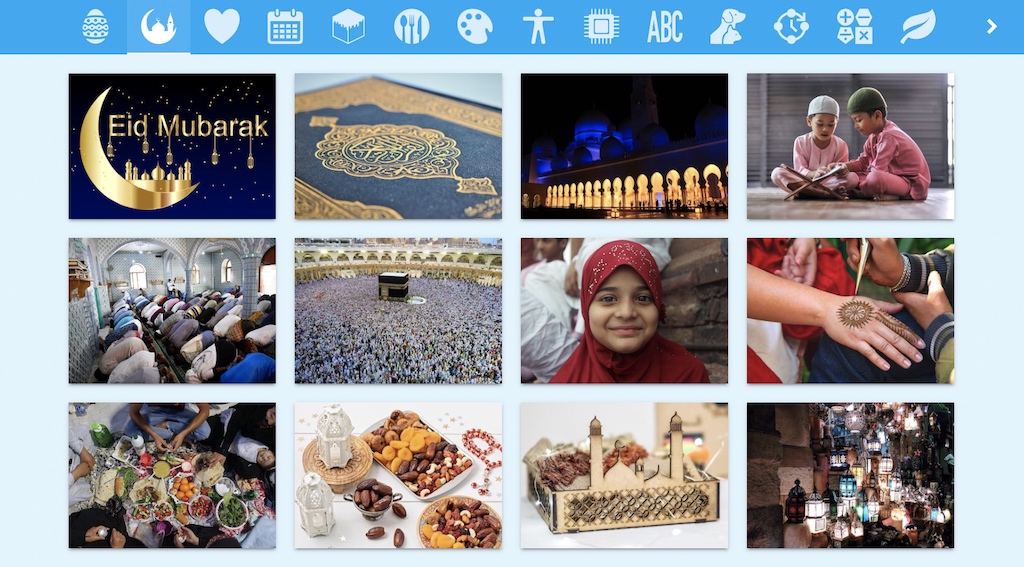
- Why do Muslims celebrate Ramadan and Eid? What are the most important traditions, and what are the stories behind them?
- Describe and explain your family traditions during Ramadan. Why are they important to you, and what do you love the most?
- People demonstrate self-discipline and self-control during Ramadan. How and why do you think these are important, and what are their benefits?
- What are your favorite foods to eat during Ramadan, and how do you prepare them?
- Ramadan is the month of forgiveness and prayers. If you could forgive someone and have three wishes come true, what would that be?
- Ramadan is also the month of giving to others. What charities or causes would you donate your time, money, or resources to and why?
- Create a book starting with the following sentence: “When I woke up on Eid day, I saw…”.
- Write a fictional story about two children who experience various magic, exciting, and fun things during Eid.
Login to app.writereader.com to see and use the Ramadan image selection.
A B “See” How Letters Can be Learned by Creating Books
Help your students learn the alphabet by using letters in authentic ways. From an early age, students can experiment with letters and written language by creating simple books with pictures, audio recordings, words, and text. Below are ideas for using WriteReader’s alphabet image bank to combine learning the alphabet, writing, and book creation.
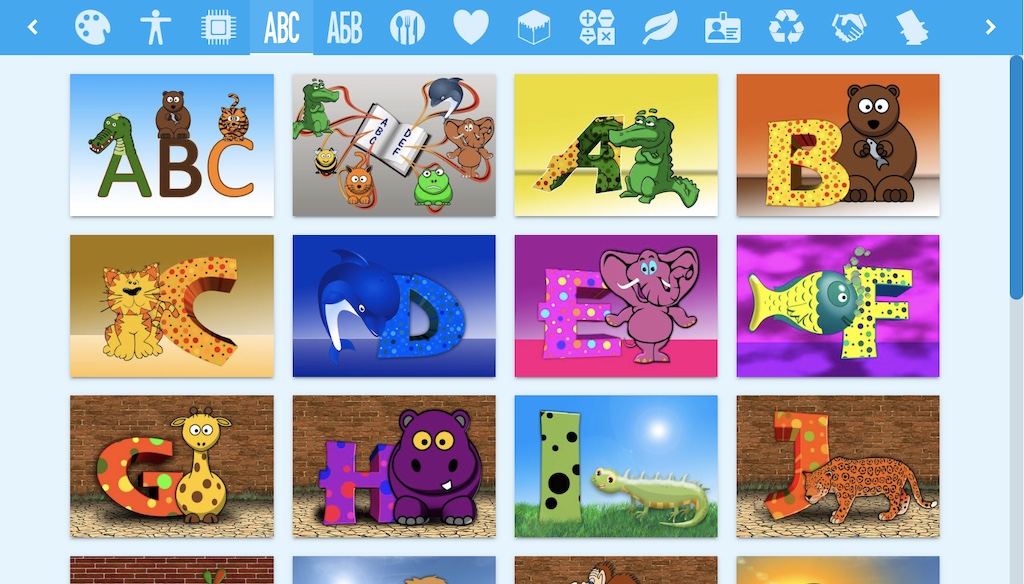
- Create a letter book and let the students take photos of their surroundings or use the image search feature to find images starting with the chosen letter.
- Make an alphabet book and create a page for each letter. Write matching and simple sentences such as “A as alligator” or “Alligator starts with an A”.
- Audio record or write short nonsense sentences with as many words as possible that start with a certain letter (e.g. “Bill the bear bows for a bug”).
- Create a dictionary by adding a page with an image for each letter of the alphabet and let the students add words along the way as they learn them.
- Write an acrostic poem with letters in the students’ names or letters from the word A L P H A B E T.
- Create a mystery letter book. Audio record or write hints on odd page numbers (e.g. “It’s the 8th letter in the alphabet” or “It’s the 4th letter in the name of our teacher”.)
- Write a fiction story with some chosen letters as the main characters.
Teachers can easily create template books to support students in writing these alphabet-themed books. Learn more about templates here.
Writing All Year Round
The seasons, months, and the passing of the year are engaging and relevant writing topics for students. To support that, we have created an image bank category with illustrations for each of the months and seasons, as well as useful cover images.
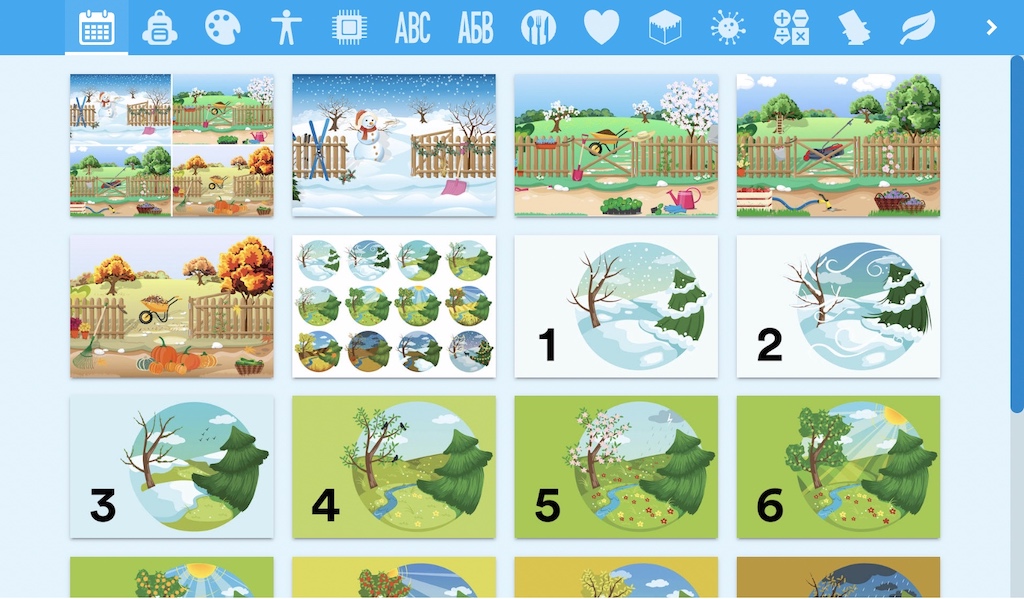
- What is your favorite season? Tell why you like it the most.
- What are your favorite activities to do during your favorite season? Make a list and describe them.
- Write a book about seasons and tell what you need to wear during each season.
- Create a book with a page for each month. Tell about family events and holidays for as many months as possible.
- Write an acrostic poem starting the sentences with the letters of your favorite season (like W I N T E R). Try to include words related to the chosen season in your poem.
- Choose a season or month and state your opinion about it by providing reasons and facts that can support your view.
- Write a fiction story where seasons play an important part. Make sure to clearly describe the seasons and the role the seasons play in your story.
- Write a weather book that describes the weather during each month or season in your local area.
- Choose a month or season and create a travel guide on what to do and see near you during that time.
For more writing inspiration specifically related to the spring season, please see these writing prompts.
Colorful Writing Ideas
Students relate to the topic of colors, as colors surround them in their everyday lives and are easy to make connections with. This new image bank features colors and relevant objects to inspire colorful writing from your students!
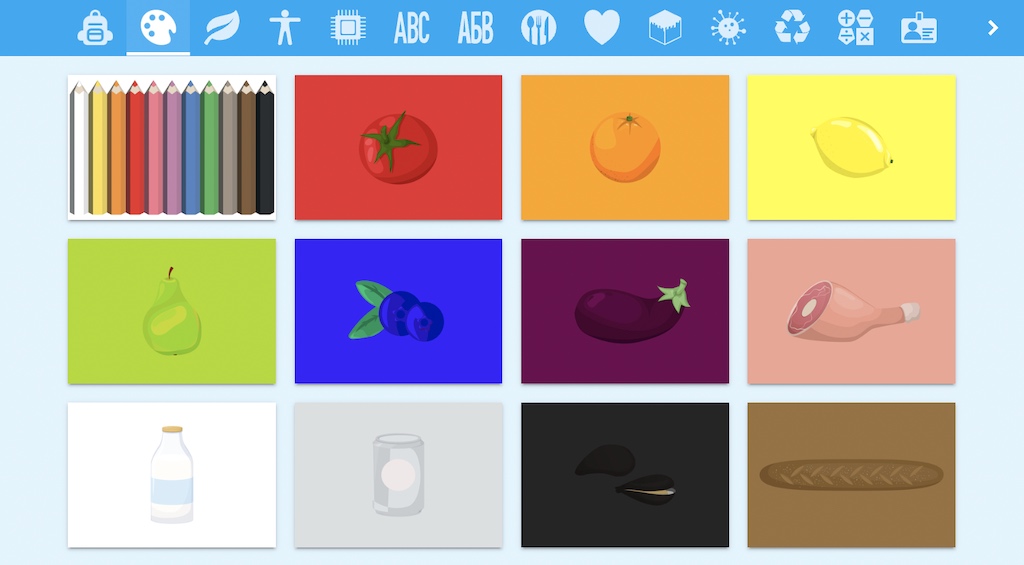
- Write a book about your favorite color. Tell why you like that color and give lots of examples of things that are that color.
- Create a color word book. Choose a color for each page and name as many things as possible in that color.
- Choose a color, take pictures of things with that color, and write a sentence about the picture (e.g. “My school bag is green”).
- Write a color poem. You can use “… is like …” as a standard part in each line. (e.g. “Yellow is like the shining sun from the sky.”)
- Make a color quiz book. On odd-numbered pages, describe a color without using the word. Name/show the color on the following page.
- Some colors are related to emotions (e.g. red = love, yellow = happy, blue = calm, green = health). Write a fiction story about the colors as characters.
- Write an informal book about the color concepts (primary and secondary colors) and how to mix different colors.
- R O Y G B I V is an acronym for the 7 colors in the rainbow. Write a rainbow acrostic poem based on the letters and colors.
Login to app.writereader.com to see the color image bank.
Back to School and Back to Writing
When students are starting a new school year it’s a good idea to re-start the students’ writing. Therefore we have created writing prompts and an image bank category with 12 images to inspire book creation about thoughts and expectations for the upcoming school year.
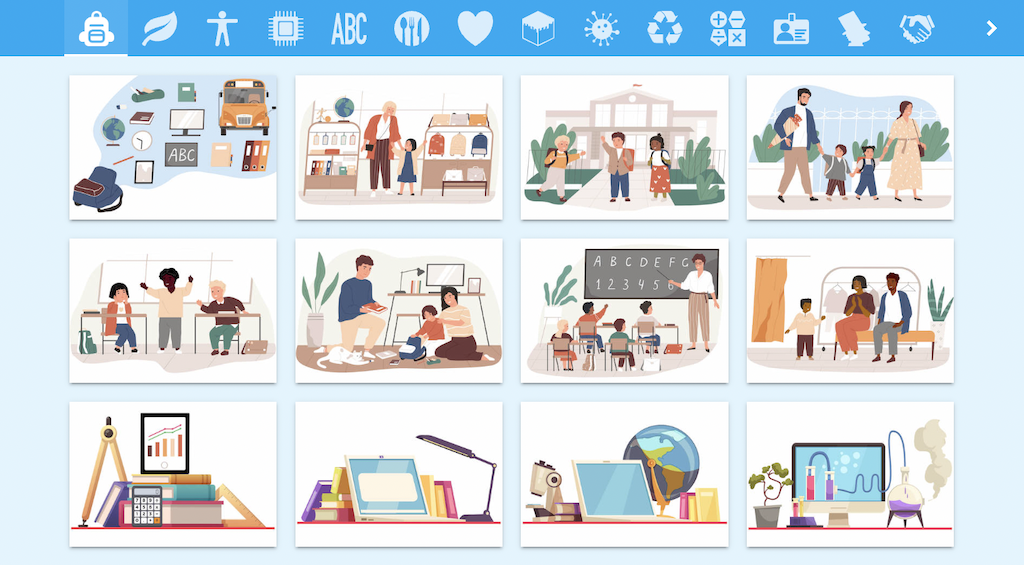
- Write a book about getting ready for the new school year and your first week or two back at school.
- Write about your favorite subjects to learn at school and why you like them.
- Tell about your goals and hopes for the new school year. What do you look forward to? What would you like to get better at, and how?
- If you were the principal at your school, what changes would you make for the new school year? Create a list of 5 changes and explain why they would improve your school.
- Write a guidebook for new students about routines, rules, and events at your school or in your classroom.
- Write a fictional story about friends from school and their adventures together.
- Write a shopping list of helpful school supplies and explain why they are important and useful.
- Write an opinion book about whether the summer holiday should be longer, shorter or is perfect as it is. Create at least three reasons to support your opinion.
For more inspiration, read this blog post about our Back to School template book.
Body Written Language
As the human body is a really good and frequently used topic in primary school teaching, we have created an image bank category with 20 illustrations that can support writing activities when working with either body parts, senses, and internal organs.
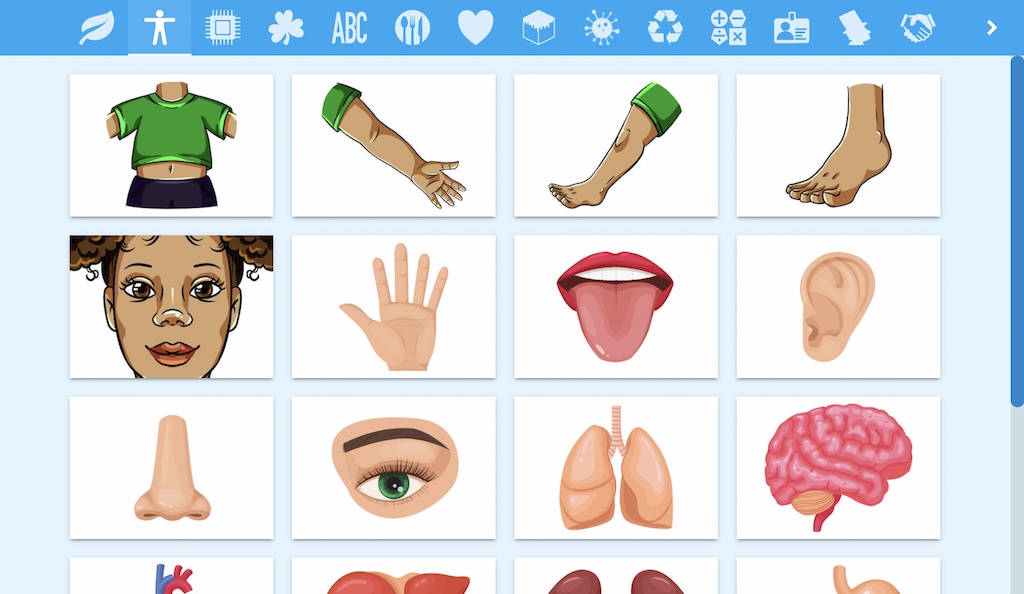
- Write a book about the 5 senses. What do you use your senses for, and why are they so vital?
- Write a guide on how different body parts work.
- Tell about 3-5 body organs, how they work, and why they are important.
- Write a book listing the pros and cons of organ donation.
- Make a vocabulary journal about the human body. Include images, vocabulary words, and definitions of each word.
- Write a fiction story about “The man/woman who had his/her senses stolen”.
- If you could add a body part that gives humans a superpower, what would it be and why?
- Make your personal top 5 body part and organ list and argue why you prefer these.
Login to app.writereader.com to see the whole body image selection.
On Your Marks, Get Set, Write
When the Olympics and Paralympics occur, there’s a lot of focus on sport and being faster, higher, or stronger. Why not use this focus and fascination to motivate our students to write about their favorite sport, athlete, or something else related to the big event? For that purpose, we have created an image bank category and some supportive writing ideas.

- Choose an Olympic athlete and write a biography about her/him and his/her sport and biggest achievements.
- Produce an instructional book to teach somebody how to take part in your favorite Olympic sport.
- Create a book about a sport or activity that isn’t currently on the Olympic program and convince the Olympic Committee that it should be in the future.
- Write a persuasive book to the Olympic Committee about why your country or city should be the next host for the Olympics.
- Write an acrostic poem starting the sentences with the letters from O L Y M P I C S.
- Create a book about a specific part of the Olympic history – e.g. host cities, records, and fun facts.
- Create a travel guide for the Olympic host city and its history and main attractions.
- Write a book with good arguments that support the people who don’t think that so many resources and time should be spent on the Olympic Games.
For more inspiration, you can read this blog post made for the Winter Olympics 2022.
Technology Writing
Technology plays a big part in student’s everyday life, therefore it’s very relevant to write about how they use and relate to digital tools and gadgets. For that purpose, we have created an image bank category with 24 different pieces of technology and 8 writing prompts to go along with it.
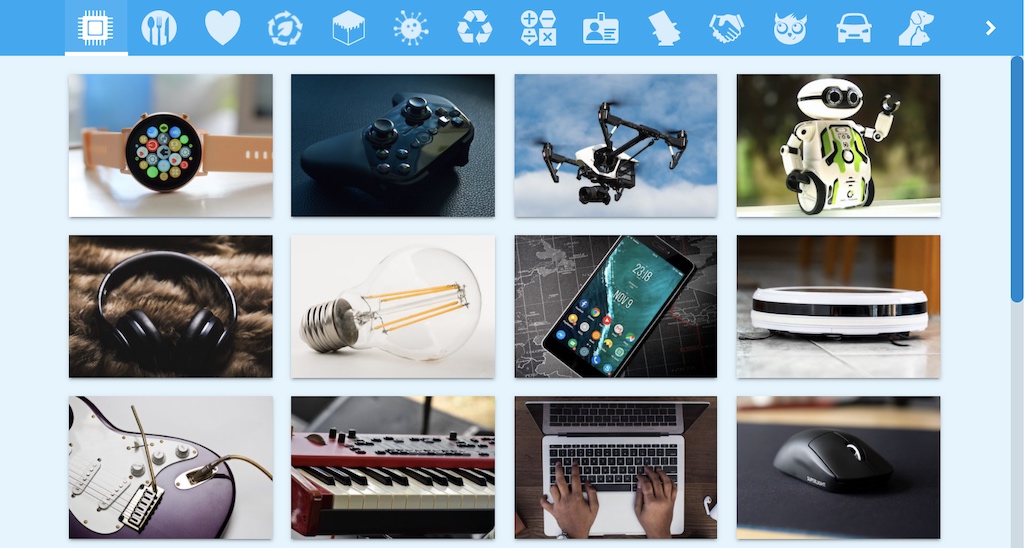
- Make a Zoom It! book containing pieces of technology. For more inspiration, read this blog post.
- Write a story about your daily life and include at least three technology tools you use the most.
- Design a new piece of technology. What would it look like? What would it do to make our lives easier or better?
- Think about how technology has affected our lives. What are the advantages and disadvantages of technology?
- Choose a piece of technology and write what you think these things would look like in 10, 20, 50, and 100 years’ time. Please explain why.
- Write a “how to” book about using a piece of technology. List all of the steps and tell about what you can do with that technology.
- Make an interview with one of your grandparents or another person who is over 50 years old about the technology in their childhood.
- Make math stories about buying pieces of technology – e.g. “If one computer mouse cost $10, how much would two cost?”, “If I have $100 to spend and buy a new game for $55, how much money will I have left?”
Login to app.writereader.com to see the technology image selection.
Pumpkin Studies and Writing
For October writing activities, we have added 16 new images, all related to pumpkins. So now you can use the below pumpkin writing activities to explore and unfold the pumpkin universe for your students.
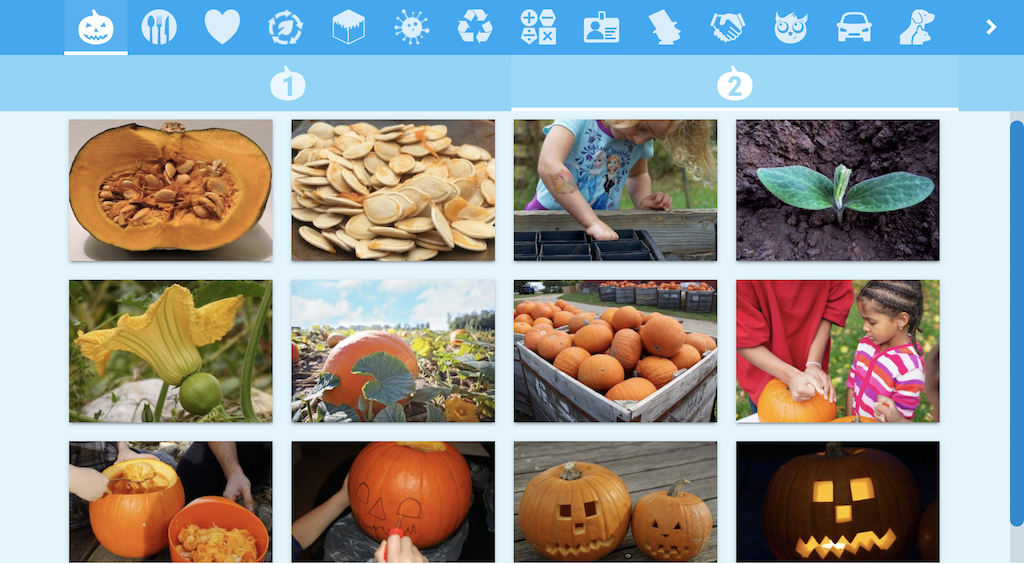
- Write about the life cycle of a pumpkin and tell how a pumpkin grows.
- What are some of your family’s fall holiday traditions? Write a story about these traditions.
- Tell what you know about pumpkins, such as “pumpkins can…”, pumpkins have…”, and “pumpkins are…”.
- Create a how-to book about carving a jack-o-lantern. List the steps and tell about some fun jack-o-lanterns you have carved.
- Before conducting a pumpkin investigation, make predictions in a Pumpkin Journal. You could predict the size of the pumpkin, how many seeds are in the pumpkin, how much the pumpkin weighs and if the pumpkin will sink or float.
- Pretend your jack-o-lantern came to life! Write a story about your jack-o-lantern’s adventures.
- Tell about your pumpkin or a picture of a pumpkin using lots of good describing words.
- Create a cookbook with one or more recipes that include pumpkin. Note! Here is a cookbook template in the app’s template library.
Login to app.writereader.com to see this and another Halloween image bank category, and below, you can find more inspiration for Halloween writing.
Environmental Writing
Writing is a good way for students to express and anchor their knowledge and opinions about the environment. To support that, as well as Earth Day and Arbor Day, we have collected 12 inspirational images and 8 prompts for writing about environmental protection, recycling, tree planting, and litter collection.
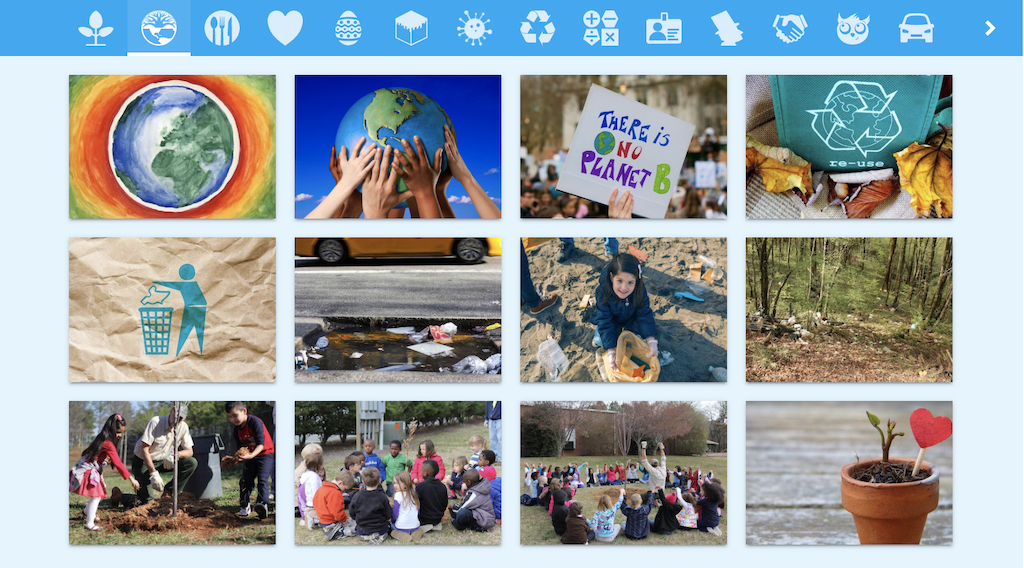
- Create a book of things you and your family can do to help protect the environment.
- Write a book for your school library about how you and your friends can use less water, plastic, power, paper, or other resources to protect the environment.
- Write a book to a local or national politician about why it’s important to save the environment and what you think needs to be done in your community, city, state, or country.
- Imagine you are the earth, what would you say to the people of the world to help them care for the environment?
- Why is it important to recycle? What litter can be recycled, and how can it be reused?
- Write, based on your litter-collection experiences, a series of suggestions on how to get people to stop littering.
- Why are trees so important for the earth? Make a list of how trees contribute to your everyday life.
- Write a how-to book on how to plant and grow a tree.
Login on app.writereader.com to see the Earth Day and Arbor Day image selection.
Bake Up a Delicious Book!
Students can use their everyday experiences with food along with the 24 selected images of popular dishes and 8 writing prompts below as a starting point for creating books and improving literacy learning.
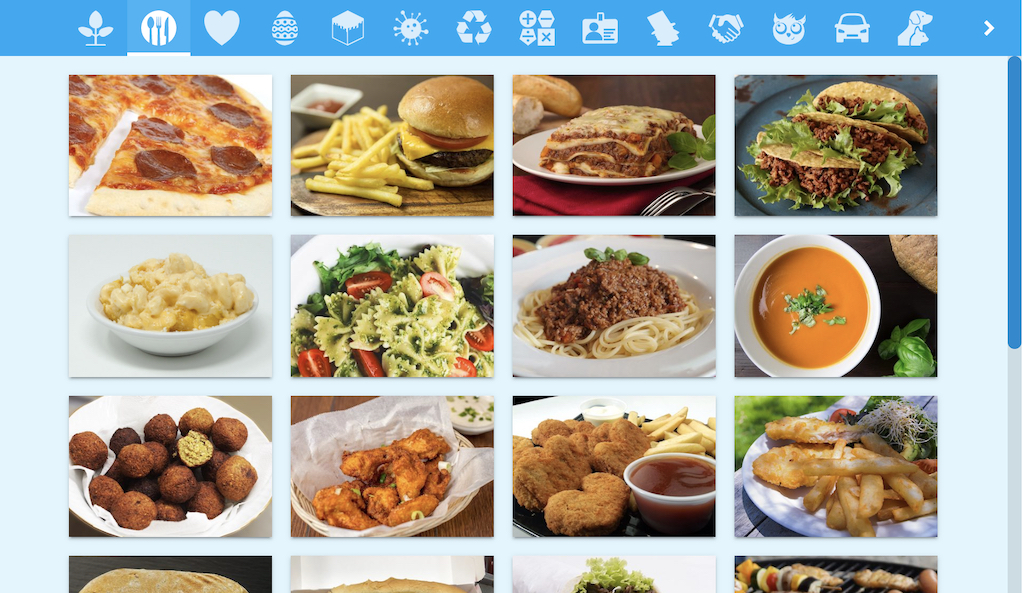
- Write a book about your three favorite foods that help your body grow. Explain why you like these foods.
- What does a perfect day of meals look like for you? Examine and analyze food labels and menus. Describe their nutritional content, what you would like to eat from the time you get up until you go to bed, and explain why.
- Plan a healthy meal and write a recipe for that meal.
- Write a book that will convince your parents to serve your favorite meal every day for an entire week. Describe the benefits of the major nutrients in the meal.
- Describe a recipe or food you have cooked. What ingredients are in it, identify the types of nutrients that are in it, and how did you prepare it?
- Do you have a food-related family tradition? If so, describe and explain the importance of this family tradition. What makes it special to you and your family?
- If you had to eat one food for the rest of your life, what food would you choose and why? Examine and analyze food labels and menus. Describe the nutritional content of the food you chose.
- Read the story “Pancakes, Pancakes!” by Eric Carle and write your own version of the story.
At www.app.writereader.com, you can find a cookbook template in the “Template Library” that can support one or more of the above prompts.
Let Writing Bloom
Spring brings new life and beginnings in nature, and writing about spring is a wonderful way to encourage students’ writing to bloom and grow, as well. Below are 8 writing prompts that can bring new life to your students’ writing.
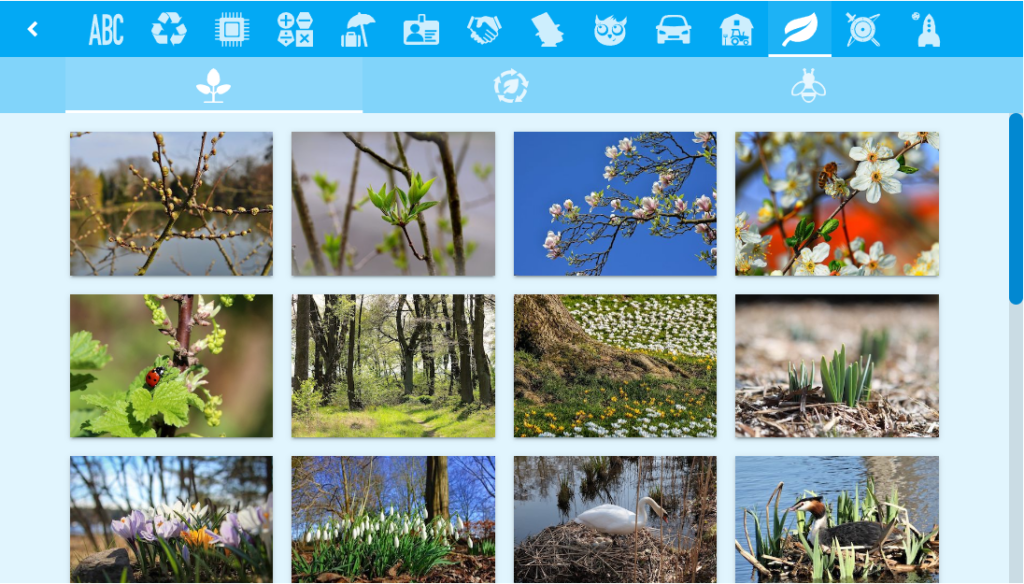
- Make a list of the signs of spring. Focus on the senses and include how spring looks, sounds, feels, and smells.
- Describe step by step one of the many spring transformation processes (e.g. egg to frog, egg to bird, seed to plant, caterpillar to butterfly).
- Write about a time when you played a good April Fools’ Day joke on someone or when someone played a good joke on you.
- Write a persuasive letter to the school principal, mayor, or politician to extend spring break an extra week.
List at least three good arguments. - Write about a perfect spring day, from morning to night. Describe 3-5 activities you would do throughout the day.
- What is the difference between spring and other seasons? List as many differences as you can.
- Pretend that you are planning a spring party for your family or classmates. Write a book with ideas for the menu, activities, and maybe a speech for the spring party.
- Many baby animals are born in the spring. Choose an animal and write about the similarities between parents and offspring. You can share physical characteristics, facts about the animals, and/or the basic needs of the animal.
Log in to app.writereader.com to find and use the 26 supportive images for spring-related writing.
Lucky St. Patrick’s Day Writing
You’re in luck! You can easily let your students create books about pots of gold, rainbows, leprechauns, shamrocks, and the true meaning of St. Patrick’s Day using WriteReader. For inspiration, you and your students can use the integrated St. Patrick’s Day images and the suggested writing prompts below.
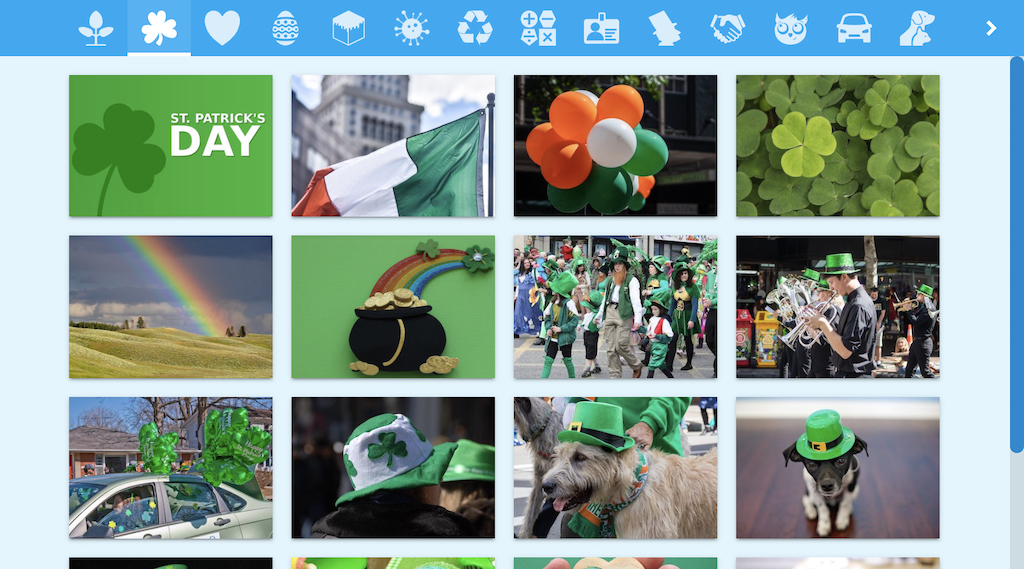
- Why do we celebrate St. Patrick’s Day, and who was St. Patrick?
- What do you like the most about St. Patrick’s Day? Explain why.
- How would you catch a sneaky little Leprechaun? Write the steps for catching a leprechaun and the kind of trap you would use.
- Why do people wear green on St. Patrick’s Day?
- Complete the following: “If I found the pot of gold, I would…”
- What treasure would you keep at the end of the rainbow, and why?
- Write a story using the following words: Irish, rainbow, shamrock, and lucky.
- Complete the following; When I woke up on St. Patrick’s Day, I saw…”.
Login on app.writereader.com to see the St. Patrick’s Day image selection.
Easter, Eggs, Bunnies, and Writing
One of the sweetest holidays of all time is Easter. While kids will spend their free time mostly hunting for chocolate eggs, they can also use this time to boost their writing skills. Inspire your students to create stories related to Easter with the below 12 images and 8 writing prompts.
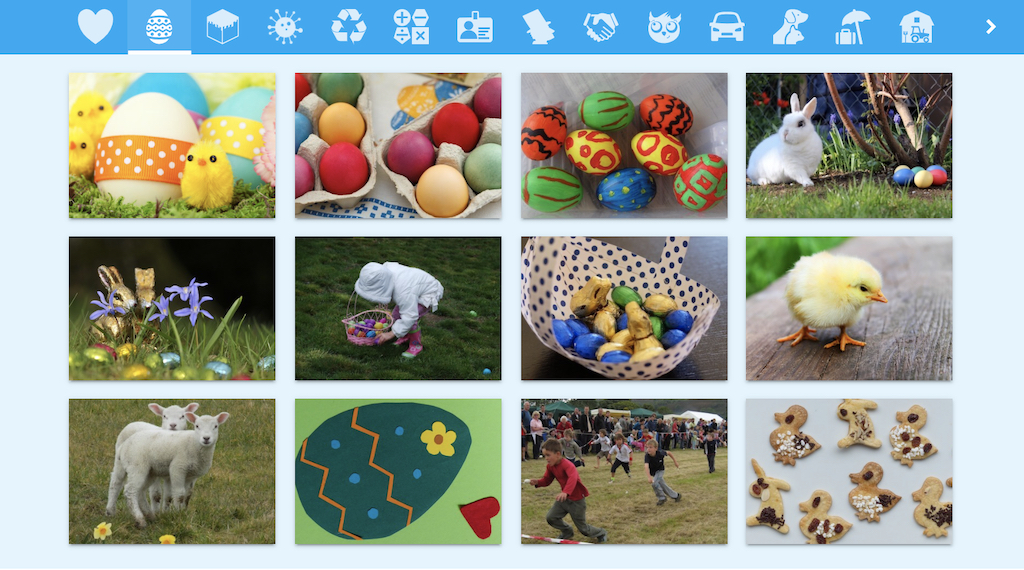
- Why do we celebrate Easter?
- Describe and explain the importance of your family traditions on Easter. How do you celebrate Easter? What fun Easter activities do you and your family do together?
- Write a book where every page starts with the sentence: I love Easter because…
- How do you decorate your Easter eggs? Tell about your favorite Easter colors, decorations, and patterns.
- What questions do you want to ask the Easter Bunny if you met?
- Out of all the candies you receive on Easter; which one is your favorite and why?
- Tell the story about how eggs and a rabbit are related to each other and Easter.
- Write your own story about how the Easter Bunny met up with the Easter Crocodile (or other animals) and how they became friends.
Login on app.writereader.com to see and use the Easter image bank category.
From Minecraft to Writecraft
Minecraft is super popular, and the game’s universe can inspire and motivate many students to create text and books. To make it easier we have created a Minecraft image bank category with 20 images, along with 8 prompts in different genres and modes of writing.
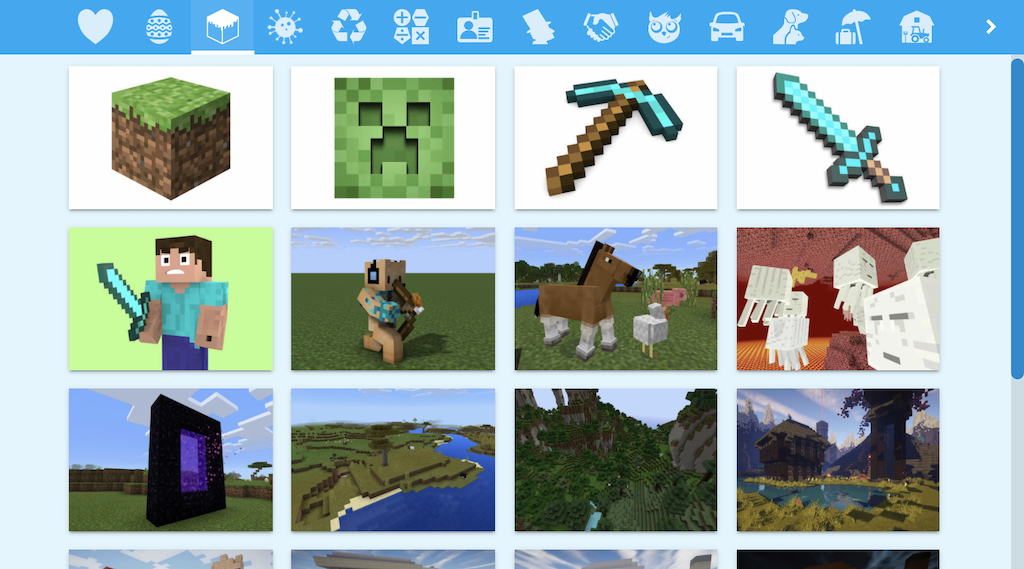
- Write a guide on what Minecraft is all about for someone who does not know the game.
- Make a step-by-step guide on how to build a house in Minecraft.
- Write a book with 5-10 tips, tricks, or special features that can make Minecraft more fun and exciting to play.
- Write a review of Minecraft where you highlight the pros and cons of the game and compare it to other games you know.
- If you were the inventor of Minecraft, what new features would you develop and why?
- Tell about the difference between Survival mode or Creative mode. Which mode do you prefer playing and why?
- Describe your best Minecraft project/game/moment and what made it so great.
- Write a story about how Steve meets and befriends a zombie. Feel free to include other Minecraft characters and other actions.
Login on app.writereader.com to see all the Minecraft images.
We Love to Write!
February 14th is Valentine’s Day, but why not spread love throughout the whole month? To help you and your students do that, we have made an image bank category with 20 images specially selected to create books and express love. We have also created 8 writing prompts, with love from us to you.

- Write about a person that you love. What makes this person special?
- Make a list of ways you could show your family that you love them.
- Make a book about things you love the most and explain why you love these things (food, toys, books, etc.).
- Write about times when you felt loved. Describe what happened and why you felt special.
- Write an acrostic poem starting the sentences with the letters from L O V E or H E A R T.
- Write a book only containing sentences starting with “Love is…”
- Write a silly love story about animals or other characters that are friends.
- Write about ways to show love through kindness to your friends.
To get more writing inspiration, read the blog post “February – The Month Of Love”.
Do You Feel Like Writing About Emotions with Emojis?
It can be hard for children to express emotions and put into words how they feel. The emoji image bank category can be a great way to help students express emotions through writing. Additionally, the writing prompts and story starters below provide ideas for supporting social-emotional learning in your classroom using WriteReader books.
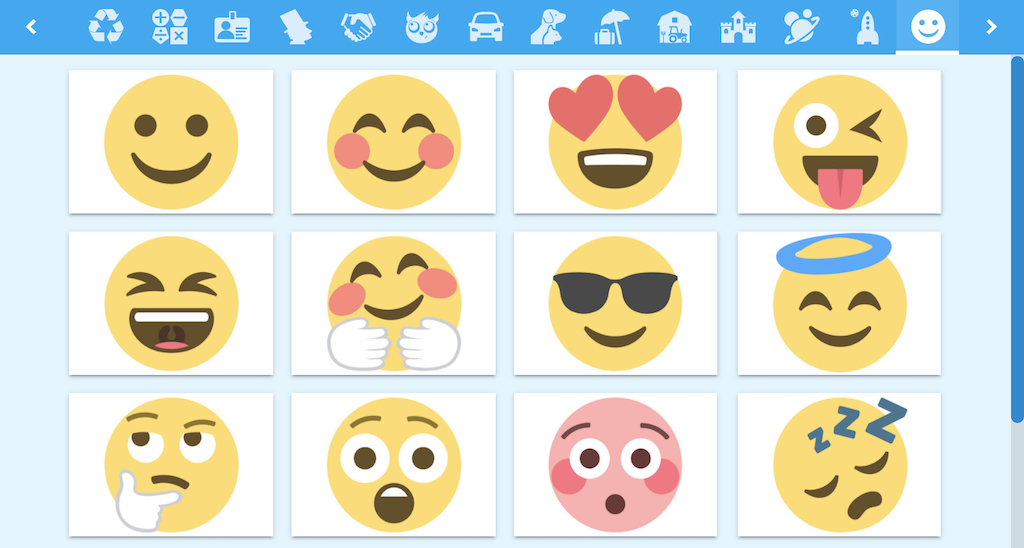
- Make a daily or weekly check-in journal of your emotions. Write about different feelings you have had and
explain what makes you feel that way. “Today I was happy because …” - What do you do to turn a negative feeling into a positive emotion? “When I’m angry, I …”
- How can you help and support a friend or classmate if he or she is in a bad mood? “To help a sad friend, I …”
- Choose an emoji and make a list of the top 5 things that can get you in that mood. “Cool: 1. I feel cool
when …” - Make a book with questions about emotions/feelings for one of your classmates and conduct an interview based on your questions. “When do you feel surprised?”
- Write a story with emojis as the main characters. Tell how emojis in different moods can help support each other. “Three emojis lived together in…”
- Tell a story about an emoji who turned from one mood to another. What caused the mood in the first place, and what made the change? “There was once a thoughtful emoji …”
For more inspiration, download our Emotions And Emojis Lesson Plan.
Tip: You can create templates to scaffold and support your student’s writing.
New Year’s Writing Prompts
The start of a New Year is a good time to both look back on the year behind us and forward to what is yet to come. Putting these reflections and resolutions into words can be a great writing activity for your students. We have created a New Year image bank category and some sample writing prompts below to inspire you and your students!
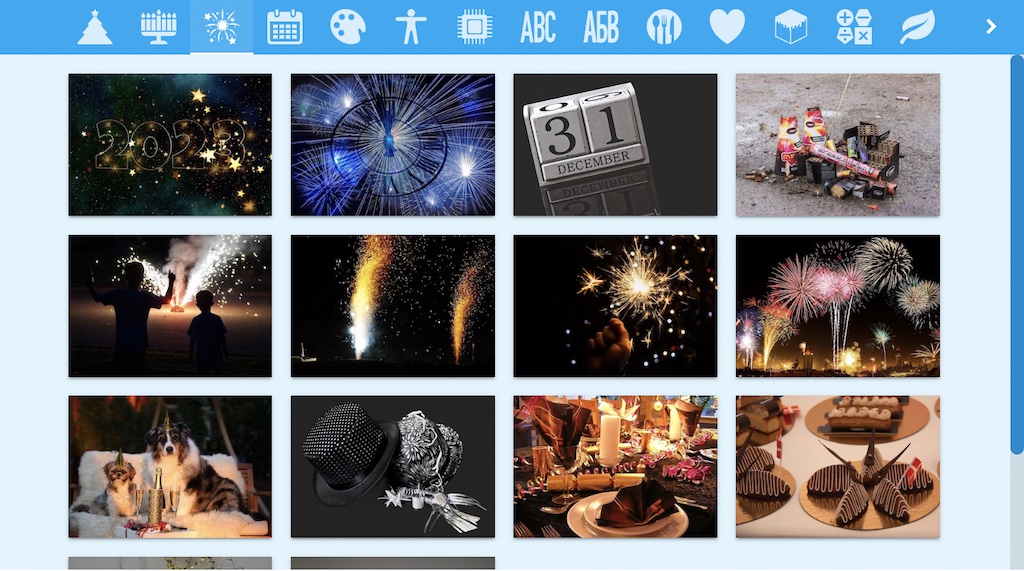
- What were the best things that happened to you and your family in 2024? What were you most grateful for?
- Make personal Top 5 books based on best films, books, school projects, events, experiences, trips, or deeds in 2024, and tell why they were special to you!
- Describe and explain the importance of your family traditions on New Year. How did you celebrate the New Year? Where were you, and who were you with? What did you do? Was the day different than usual due to covid-19? Why or why not?
- What are the three things you are most looking forward to in 2025?
- What are your main wishes for 2025 regarding yourself, your family, city/state, country, and/or the world?
- What are your New Year’s resolutions for 2025? What will you need to do to keep your resolutions? Describe the importance of setting these goals.
- What are your learning goals for 2025? What will you need to do to achieve your goals? How can your family, classmates, and teachers help you achieve your goals? Describe the importance of setting these goals.
- What can you do in 2025 to show gratitude for and help friends, family, and other people?
Login in on app.writereader.com to see all the New Year images and to begin writing your New Year’s stories!
Thankful and Thoughtful Writing Prompts
We’ve gathered a dozen images suitable for writing books about Thanksgiving, and hope the following nine writing prompts can inspire you and your students to write a lot of thankful and creative books.
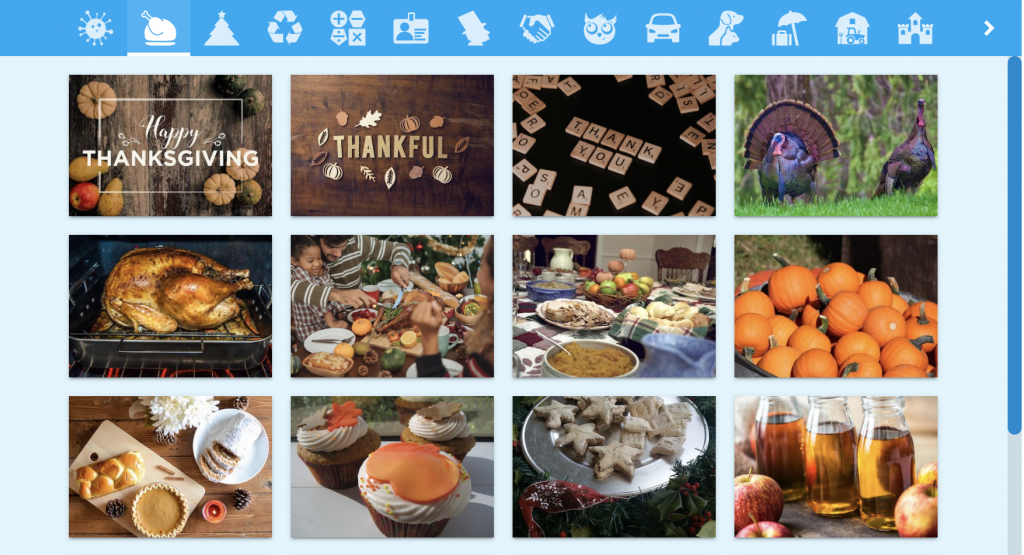
- Write one page each for the five things that you’re most thankful for.
- Write a descriptive essay or a short story that vividly captures the sensory experience of a Thanksgiving feast. Focus on the sights, sounds, smells, tastes, and textures. Use rich, evocative language to transport the reader to the heart of the celebration.
- If you could choose any guest to come over for Thanksgiving, who would it be, and what would you like to do together with that person?
- Write about your favorite parts of fall, from morning to night. Describe 3-5 activities you would do throughout the day.
- Imagine you are a chef tasked with creating a new Thanksgiving dish. Describe the dish and how it came to be.
- Write a story from the perspective of a turkey who has escaped from a farm on Thanksgiving Day.
- Write a book with a Thanksgiving blessing to the people you love and want to thank.
- Explain Thanksgiving to someone in another country who has never heard about the tradition.
- Describe and explain the importance of your family traditions on Thanksgiving.
Login to app.writereader.com to see all the Thanksgiving images.
Images to Support Students Writing About Covid-19
In these special times, it’s very important to give children a voice and the opportunity to express their knowledge, thoughts, and feelings. Writing is an obvious form of expression that allows students to share their thoughts and knowledge with others and, at the same time, save their experience of a historical time.
To motivate and facilitate that process, we have put together a series of illustrations and writing prompts. Encourage students to use the image bank, voice search, call-outs (speech/thought bubbles), and record features to enhance their writing.
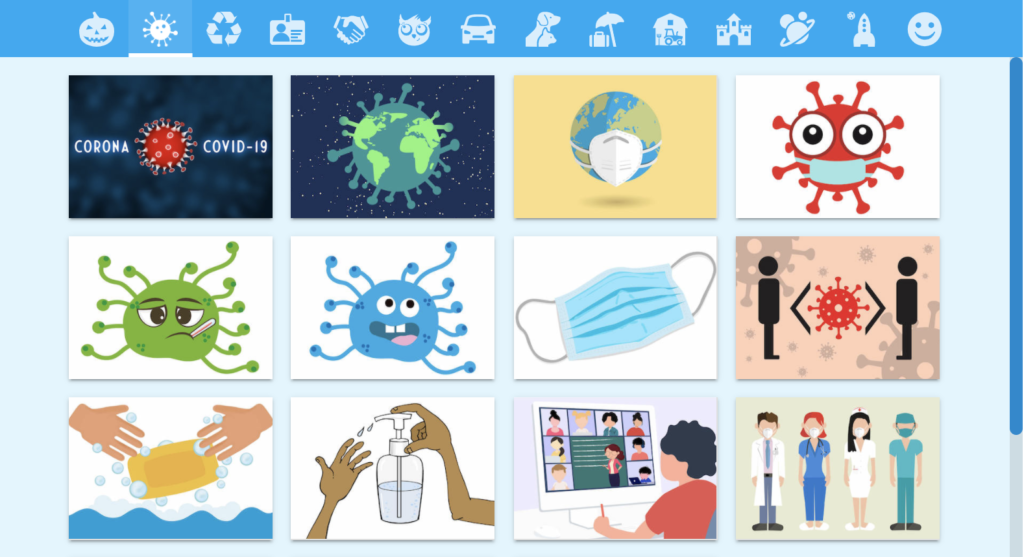
- How has the pandemic affected your personal health decisions? At home, at school, in the community?
- Write a guide on how to protect yourself, others, and your surroundings from the coronavirus.
- Write a story about a superhero who saves a lot of people from the coronavirus and defeats the pandemic.
- Tell about some experiences you have had during this time. How did you feel? What did you do about it?
- Write a letter to your peers identifying people who can provide helpful health information and describing methods for accessing health information.
- Write a thank you book to doctors, nurses, and all frontline workers.
- Imagine that you invented the covid-19 vaccine and were allowed to inform others about the importance of immunizations. Create a book that explains the importance of immunizations, and also decide who would receive the first doses and why?
- What has your family been doing together during the pandemic? Have you done something you do not usually do or something you have done more or less than usual?
Tip: Create your own WriteReader templates and share them with your students.
Scary Content for Halloween Writing
For the month of October, the following 20 new Halloween images will be available in the image bank to inspire spooky writing for your students.
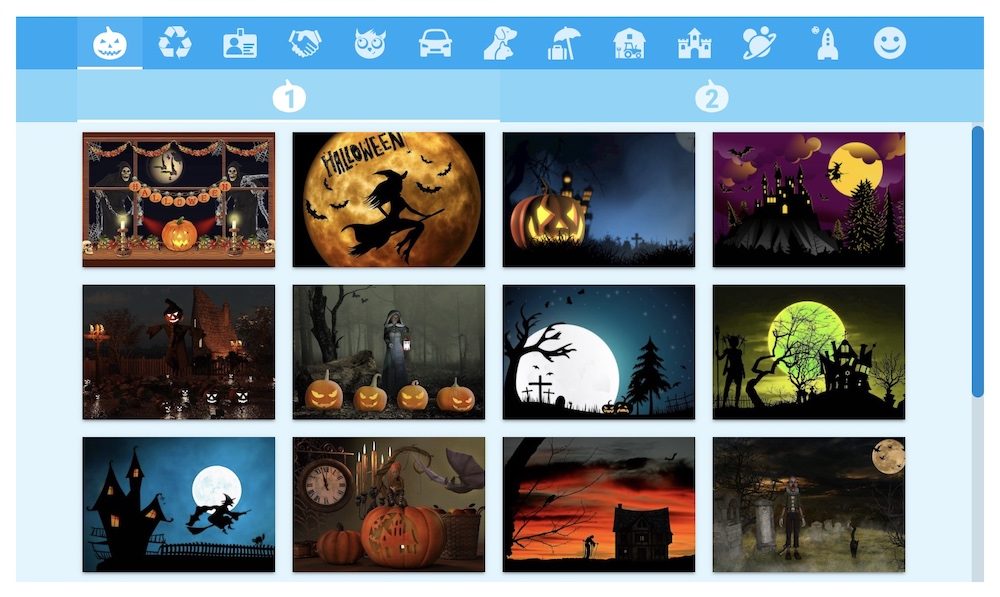
Here are 8 writing prompts that will help scaffold students writing.
- What is the scariest thing that you have ever experienced? What makes it so scary?
- What was the best Halloween costume you have ever had? Write what made it so special.
- What was the best Halloween you ever had? What made it great?
- Explain Halloween to someone in another country who has never heard of the celebration.
- Create a list of corona safety rules for Halloween and Trick-or-Treating.
- Would you spend a night in a graveyard or haunted house for $100? Why or why not?
- Create and describe your very own monster. What does it look like? What is the monster’s name? What’s its most scary feature?
- Write a scary trick-or-treating story, starting from the minute the main character puts on his/her costume and finishing when he/she puts on normal clothes again.
Tip: Create your own WriteReader templates and share them with your students.



